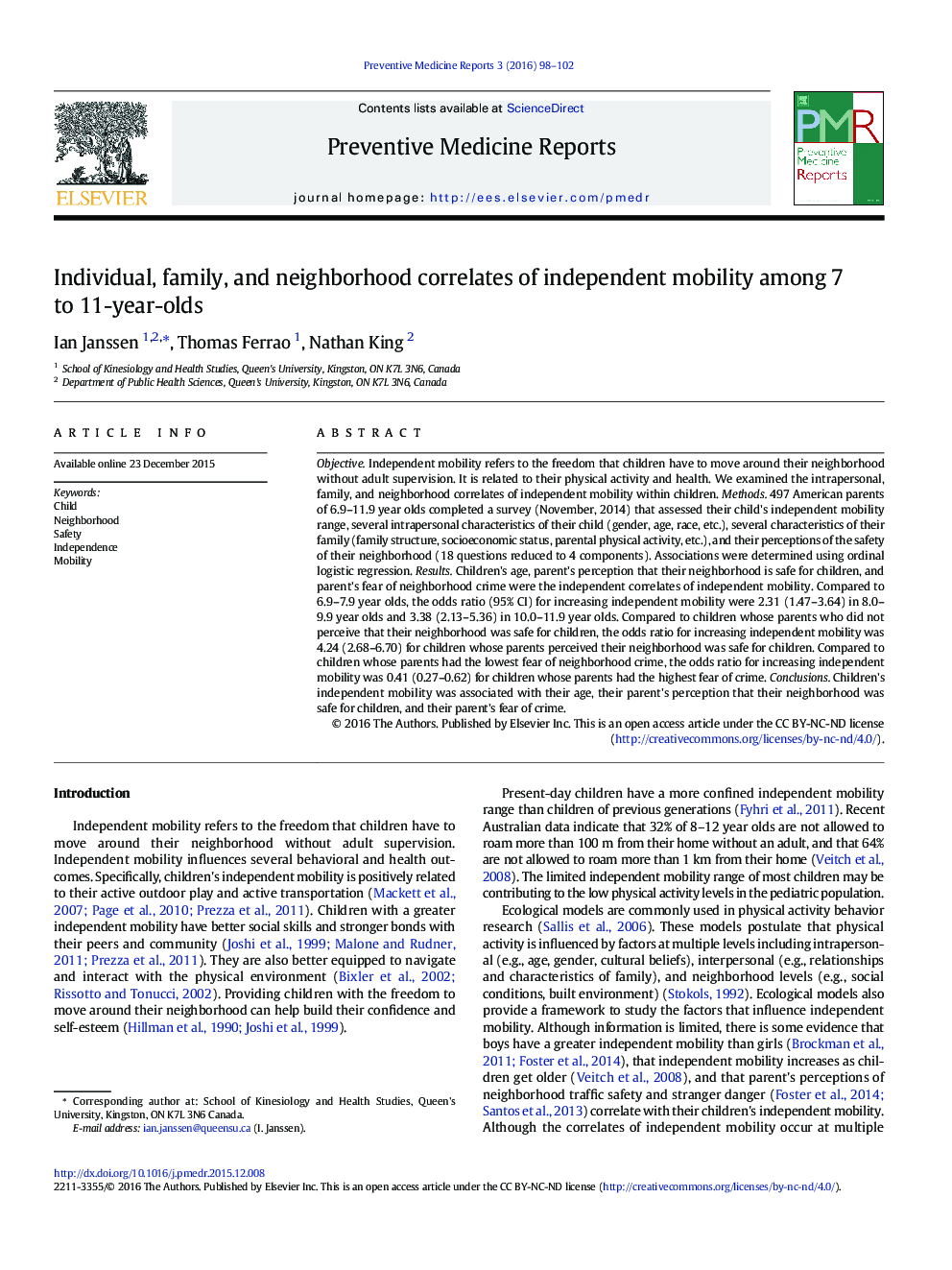| کد مقاله | کد نشریه | سال انتشار | مقاله انگلیسی | نسخه تمام متن |
|---|---|---|---|---|
| 4202335 | 1609089 | 2016 | 5 صفحه PDF | دانلود رایگان |
• This study examined the correlates of independent mobility with 7–11 year olds.
• Several intrapersonal, family, neighborhood and community correlates were considered.
• Child's age was the only intrapersonal factor that correlated with mobility.
• Parent's perceptions of neighborhood safety and crime were important correlates.
Objective. Independent mobility refers to the freedom that children have to move around their neighborhood without adult supervision. It is related to their physical activity and health. We examined the intrapersonal, family, and neighborhood correlates of independent mobility within children. Methods. 497 American parents of 6.9–11.9 year olds completed a survey (November, 2014) that assessed their child's independent mobility range, several intrapersonal characteristics of their child (gender, age, race, etc.), several characteristics of their family (family structure, socioeconomic status, parental physical activity, etc.), and their perceptions of the safety of their neighborhood (18 questions reduced to 4 components). Associations were determined using ordinal logistic regression. Results. Children's age, parent's perception that their neighborhood is safe for children, and parent's fear of neighborhood crime were the independent correlates of independent mobility. Compared to 6.9–7.9 year olds, the odds ratio (95% CI) for increasing independent mobility were 2.31 (1.47–3.64) in 8.0–9.9 year olds and 3.38 (2.13–5.36) in 10.0–11.9 year olds. Compared to children whose parents who did not perceive that their neighborhood was safe for children, the odds ratio for increasing independent mobility was 4.24 (2.68–6.70) for children whose parents perceived their neighborhood was safe for children. Compared to children whose parents had the lowest fear of neighborhood crime, the odds ratio for increasing independent mobility was 0.41 (0.27–0.62) for children whose parents had the highest fear of crime. Conclusions. Children's independent mobility was associated with their age, their parent's perception that their neighborhood was safe for children, and their parent's fear of crime.
Journal: Preventive Medicine Reports - Volume 3, June 2016, Pages 98–102
